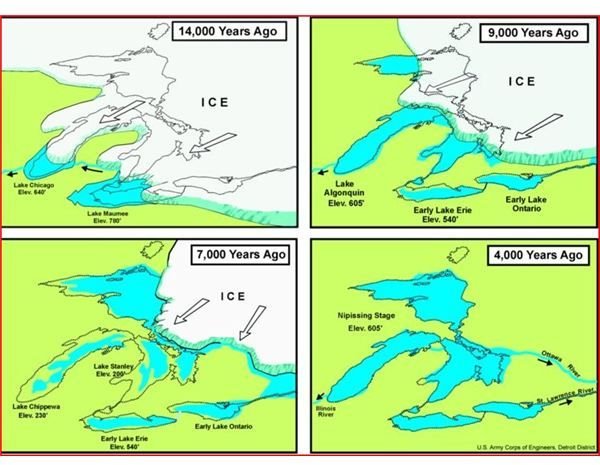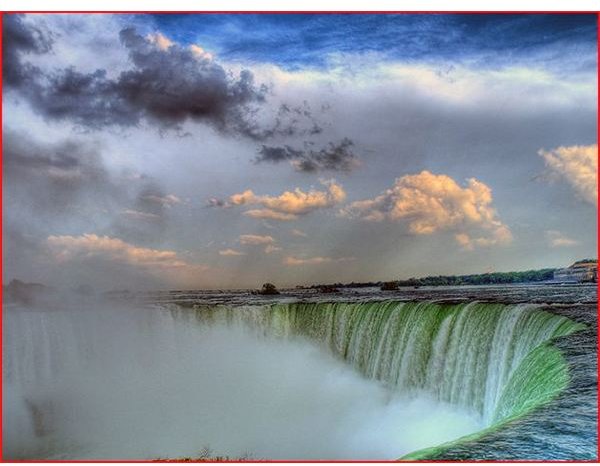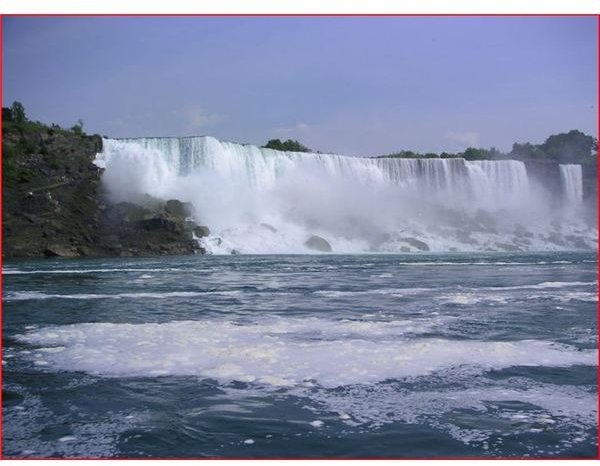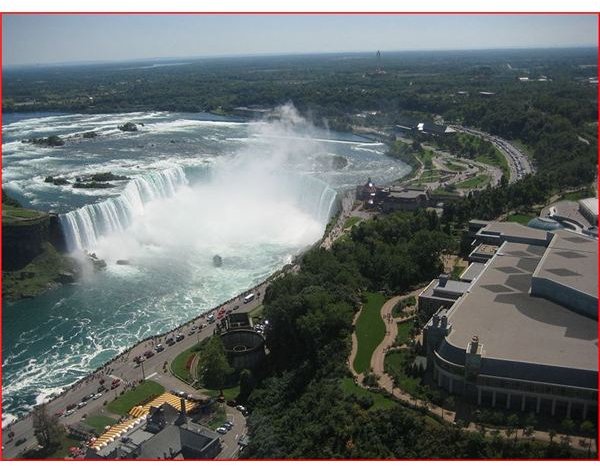Information About Niagara Falls Geology
In the Beginning, There Was Ice
Understanding Niagara Falls geology gives us an intriguing look into how a spectacular, one of a kind landscape was formed over time by the influence of the mighty forces of nature. It’s also important to note that Niagara Falls is still changing right in front of us, little by little, and being reshaped by the power of erosion. As you likely know, geology is the study of the Earth’s structure, especially the soil, rocks, and minerals it’s composed of, and the origins and history of those structures in a specified area. When it comes to describing Niagara Falls, the most powerful influence on geology is water, originally in the form of ice after the melting of the last Ice Age.
Niagara Falls are a product of the glacial period Wisconsin Glacial Episode, when the last glacial maximum extended as far as it would go, which is estimated to have taken place between 18,000 and 21,000 years ago. The Wisconsin glaciation drastically changed the geology of the upper half of North America. 18,000 years ago, there were prehistoric ice sheets as much as 3 kilometers thick covering southern Ontario and when they advanced southward, they carved out what are now the Great Lakes. 20% of the world’s freshwater supply today is in the Great Lakes and 99% of that is from the melted glaciers. Four out of the five Great Lakes drain over Niagara Falls today. That gives you an idea of where the staggering amount of water comes from that pours over the falls every day.
Image courtesy of commons.wikimedia.org
Melting of the Glaciers

About 12,500 years ago, the Niagara Peninsula was no longer ensconced in ice after it melted, which was a pivitol time in Niagra Falls geology. The ice continued to retreat northward, and the resulting melt waters flowed down through what are now Lake Erie, Lake Ontario, and the Niagara River. Originally there were 5 major spillways from Lake Erie to Lake Ontario. As the massive quantities of water spilled southward, four of them essentially dried up, leaving only one, the original Niagara Falls. This was the escarpment (the steep ridge where the water flows over) at Queenston-Lewiston in Canada. It is here that Niagara Falls began slowly and steadily eroding the bedrock there.
Then, about 2000 years later, alternating retreats and re-advances of the ice, and what is known as isostatic rebounding (when land is released from the extreme pressure of massive sheets of ice, caused profound geological effects to take place. The resulting glacial waters were rerouted through what is today Northern Ontario so that all but roughly 10% of the water (of what currently pours over the Falls) bypassed the southern route pouring out of The Great Lakes. Much of that water was held back like a dam in the area of the Niagara Glen.
Image courtesy of commons.wikimedia.org
A Geological Anomaly and The Eroding Power of Cavitation

Continuing on with our geological timeline of Niagara Falls from page one, 5,500 years ago those melt waters were once again re-directed through the southern Ontario route, restoring Niagara Falls to all its glory. Contrary to this process that took thousands of years to develop, what happened next was furiously quick in geological terms. The Falls reached what is now known as the Whirlpool and the Niagara River blasted out an old river bed buried and sealed in debris from the last Ice Age. This process left a 90 degree turn in the Niagara River and then the Falls were reestablished in roughly the area of what we know today as the Whirlpool Rapids Bridge.
In its present position, Niagara Falls continues to carve its way through solid rock. The fastest type of erosion takes place there which is called cavitation. This is a unique kind of erosion that takes place at the base of waterfalls as the result of the bubbles created by the speed of the falling water crashing at the basin. These bubbles formed by escaping air (cavities) collapse after the water comes to rest and send out shock waves which batter and crumble the rocks surrounding the area.
Image courtesy of wikipedia commons
The Rocks and Minerals of Niagara Falls

Since we are discussing Niagara Falls geology, it’s also imperative to note the type of rocks that are in the area, some of which are constantly eroding do to the process of cavitation. Interestingly enough, at roughly 400 million years ago, tropical saltwater seas actually covered the Niagara region. Ancient specimens and fossils found in the area which are found under our oceans today point to this being the case. After the ancient river bed was blasted out by the relatively new Niagara River, rock layers that had been laid down as sediments of mud, sand, clay, and shells under that ancient sea were exposed. Then they became sedimentary rock from all the pressure.
What can be seen today, looking toward the American side, is perhaps the largest display of this type of rock, known as a Silurian exposure. Silurian simply means from the ancient geological period known as the Palezoic Era. Shale, sandstone, and limestone are all in the area. The stunning emerald waters of the Niagara River are also the result of erosion causing an abundant supply of minerals to be displaced in the water. Approximately 60 tons of these dissolved minerals come sweeping over the Falls every minute. The green color is made from “rock flour” which are dissolved salts from finely grained rock believed to come from the limestone bed of rock.
Image courtesy of commons.wikimedia.org
Now that you are well versed in Niagara Falls geology, you will better appreciate how many thousands of years it took to form that awe-inspiring site. It is in witnessing these stunning geological features that we humans can be humbled by our fledgling and relatively insignificant presence on a planet that flourished with natural beauty long before we ever came into being. But if you go there today, you will also see our attempts at holding back the power of erosion with man-made structures, largely in part to protect power plants that service many of our modern needs.
References
Niagra Falls Formation: Niagarafallsstatepark.com
